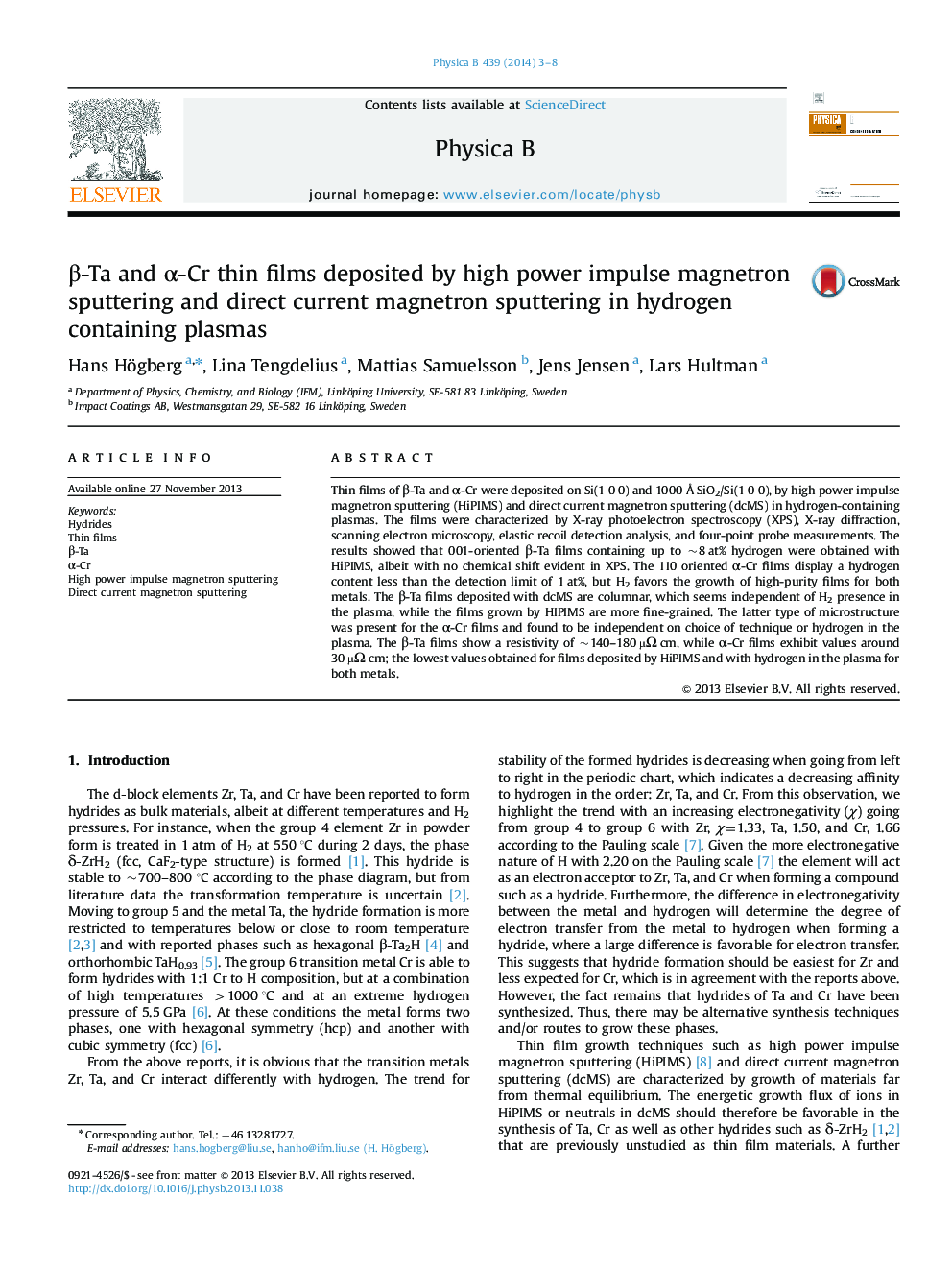| Article ID | Journal | Published Year | Pages | File Type |
|---|---|---|---|---|
| 1809654 | Physica B: Condensed Matter | 2014 | 6 Pages |
Thin films of β-Ta and α-Cr were deposited on Si(1 0 0) and 1000 Å SiO2/Si(1 0 0), by high power impulse magnetron sputtering (HiPIMS) and direct current magnetron sputtering (dcMS) in hydrogen-containing plasmas. The films were characterized by X-ray photoelectron spectroscopy (XPS), X-ray diffraction, scanning electron microscopy, elastic recoil detection analysis, and four-point probe measurements. The results showed that 001-oriented β-Ta films containing up to ~8 at% hydrogen were obtained with HiPIMS, albeit with no chemical shift evident in XPS. The 110 oriented α-Cr films display a hydrogen content less than the detection limit of 1 at%, but H2 favors the growth of high-purity films for both metals. The β-Ta films deposited with dcMS are columnar, which seems independent of H2 presence in the plasma, while the films grown by HIPIMS are more fine-grained. The latter type of microstructure was present for the α-Cr films and found to be independent on choice of technique or hydrogen in the plasma. The β-Ta films show a resistivity of ~140–180 µΩ cm, while α-Cr films exhibit values around 30 µΩ cm; the lowest values obtained for films deposited by HiPIMS and with hydrogen in the plasma for both metals.
